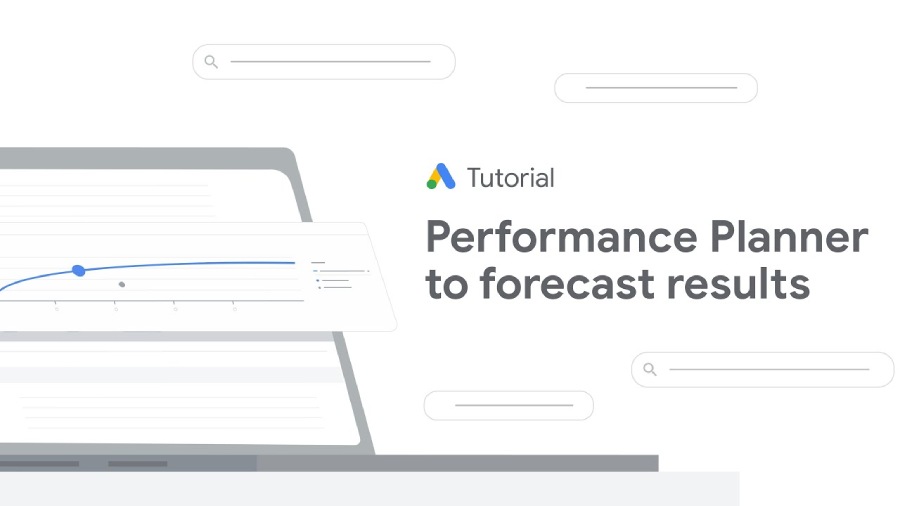Question: What can the performance planner assist you with?
Options:
1. To create an optimized copy of your existing campaign, so that it can be tested with the drafts and experiments tool
2. To determine which Google Ads features should be enabled to get the best performance from your campaigns
3. To analyze the search term report and add both keywords and negative keywords, depending on historical performance
4. To improve return on investment so you can drive more conversions within your target CPA(cost-per-acquisition)
Answer: To improve return on investment so you can drive more conversions within your target CPA(cost-per-acquisition)
Explanation:
To improve return on investment so you can drive more conversions within your target CPA(cost-per-acquisition) is the answer to what can the performance planner assist you with. To understand the answer let’s have a look at the definitions of the performance planner.
Performance Planner is a predictive tool, not a magic wand. Forecasts can be very accurate, but actual performance may vary. It also doesn’t directly control your campaigns; it provides insights and suggestions for you to take action on.
What Is Performance Planner?
Imagine a crystal ball for your advertising budget. That’s essentially a Performance Planner, a free tool by Google Ads. It helps you predict the future performance of your existing campaigns by analyzing past data and simulating different scenarios.
Now you know which is the correct option for what can the performance planner assist you with. Let’s see what it can do for you:
- Forecast performance: It predicts clicks, impressions, and conversions for your campaigns based on historical data and current trends.
- Simulate scenarios: Play “what-if” by adjusting your budget, bids, or targeting. See how these changes might impact your goals before making them in your actual campaigns.
- Identify seasonal trends: Performance Planner considers factors like seasonality when making forecasts. This helps you avoid surprises and plan adjustments for predictable ups and downs throughout the year.
Think of it as a testing ground before you make real changes to your campaigns. It empowers you to make data-driven decisions about your advertising strategy and ultimately get the most out of your ad spend.
What Are The Advantages Of Using Google Ad Performance?
The Google Ads Performance Planner acts as your advertising campaign strategist, helping you optimize your budget and achieve your goals. Do you know a single option of what can the performance planner assist you with? What are the other advantages of using Google Ad Performances.
- Predict Performance: Performance Planner analyzes past campaign data and forecasts future results for key metrics like clicks, impressions, and conversions. This allows you to see the potential impact of keeping things as-is.
- Simulate Scenarios: Wondering what would happen if you increased your budget for a specific campaign? Performance Planner lets you play “what-if” by simulating adjustments to bids, budgets, and targeting settings. This helps you see how these changes might affect your goals before actually implementing them.
- Identify Seasonal Trends: Performance Planner considers factors like seasonality when making predictions. This ensures your forecasts are realistic and account for predictable fluctuations in campaign performance throughout the year.
- Optimize Budget Allocation: By using Performance Planner’s forecasts and simulations, you can make informed decisions about how to distribute your advertising budget across different campaigns. This helps you maximize your return on investment (ROI).
- Discover New Opportunities: Performance Planner’s simulations can reveal areas where you might be able to improve conversions or expand your reach. This helps you identify potential optimizations you might not have considered before.
Overall, Performance Planner is a valuable tool for any advertiser who wants to get the most out of their Google Ads campaigns. It empowers you to make data-driven decisions and achieve your advertising goals more effectively.
How To Optimize Your Google Ads Campaigns?
Now you know which is the correct option for what can the performance planner assist you with? Let’s move on to the next part for understanding how optimizations of the Google ads campaigns run. Here are some key strategies to optimize your Google Ads campaigns and get the most out of your advertising budget:
Keyword Research and Targeting:
Ensure your keywords are highly relevant to your offerings and target the right audience. Use a mix of broad, phrase, and exact-match keywords.
Identify and add negative keywords to prevent your ads from showing for irrelevant searches.
Leverage demographics, interests, and in-market segments to reach the users most likely to convert.
Crafting Compelling Ads:
Write clear, concise, and attention-grabbing ad copy that highlights your very unique type of selling proposition (USP).
Included a very clear and effective CTA that informs every user what you want them to do (e.g., “Shop Now,” “Learn More”).
Experiment with multiple ad variations to see which ones perform best.
Landing Page Optimization:
Ensure your landing page is highly relevant to your ad copy and offers a seamless user experience.
Make sure your landing pages are optimized for mobile devices, as a significant portion of searches happen on smartphones.
Clearly communicate the value proposition of your product or service on the landing page.
Reiterate the CTA from your ad on the landing page to encourage conversions.
Campaign Settings and Budget Management:
Choose the right bidding strategy based on your goals (e.g., maximize clicks, conversions, or return on ad spend).
Distribute your budget strategically across campaigns and ad groups based on performance. Use Performance Planner to forecast potential outcomes of different budget allocations.
Target your ads to specific geographic locations where your audience resides.
Schedule your ads to run during the days and times when your target audience is most active online.
Performance Tracking and Optimization:
Set up conversion tracking to measure how effectively your ads are driving desired actions (e.g., sales, sign-ups).
Regularly monitor key metrics like clicks, impressions, conversions, and cost-per-acquisition (CPA).
Use the insights from your data to identify areas for improvement and make adjustments to your campaigns accordingly.
Don’t be afraid to experiment with different settings and strategies to see what works best for your campaigns.
By following these strategies and utilizing tools like Google Ads Performance Planner, you can effectively optimize your campaigns, maximize your return on investment (ROI), and achieve your advertising goals.
How To Use The Google Ads Performance Planner Forecasting Tool?
Here’s a breakdown of what can the performance planner assist you with and what are the additional performances.
Accessing Performance Planner:
- Log in to your Google Ads account.
- Click the “Tools” icon and navigate to “Planning” > “Performance Planner.”
- Setting Up Your Plan:
- Click the “+” icon to create a new plan.
- Choose the date range for your forecast (e.g., next quarter).
- Select the key metric you want to focus on (e.g., conversions, clicks). You can optionally specify a conversion goal (e.g., purchases, sign-ups).
- Define a target metric (optional). This could be a specific number of conversions you aim to achieve within the date range.
- Select the campaigns you want to include in the plan. Ideally, choose campaigns with similar goals for better forecasting.
Exploring Scenarios:
Performance Planner will display a baseline forecast based on your current campaign settings (gray line).
You can adjust settings like budget, bids, or targeting for individual campaigns and see how it affects the forecast (blue line). Experiment with different scenarios to identify the most impactful adjustments for your goals.
Analyzing the Forecasts:
The graph will visually represent the predicted performance under different scenarios.
You can see how changes in budget or bids might affect clicks, impressions, and conversions.
Look for trends and identify scenarios that optimize your chosen metric (e.g., maximizing conversions within budget).
Implementing Your Plan:
Based on the insights from Performance Planner, you can manually adjust your campaign settings (budget, bids, targeting) in Google Ads.
Remember, Performance Planner provides forecasts, not guarantees. Monitor your campaign performance after making changes and refine your strategy as needed.
Tips for Effective Use:
- Focus on similar campaigns: Group campaigns with similar goals for more accurate forecasts.
- Consider seasonality: Performance Planner accounts for seasonality, but you can also adjust forecasts based on your specific knowledge of seasonal trends.
- Start with small adjustments: Don’t make drastic changes based solely on forecasts. Test incrementally and monitor results.
- Use Performance Planner regularly: The more data it gathers, the more accurate its forecasts become over time. By following these steps and tips, you can effectively use Google Ads Performance Planner to forecast campaign performance, optimize your budget allocation, and achieve your advertising goals.
In Conclusion:
In essence, Performance Planner is a valuable tool that takes the guesswork out of managing your Google Ads campaigns. It equips you with the insights and foresight to make strategic decisions, ultimately leading to more effective and successful advertising efforts. If you want to share any opinion about what can the performance planner assist you with questions or any other queries you can simply use the comment section and comment back to us.
Read More:
- Auction Time Advantage: The Core Benefit of Google Ads Automated Bidding
- When Linking A Google Ads Account To Google Analytics, What Is Not Possible?
- Which Three Campaign Parameters Are Recommended To Manually Track Campaigns
~Feature Image Source: https://tinyurl.com/msutcp29


